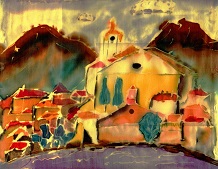|
Mammut von Auto Union DKW F
89-L Schnellaster mit Theke von Thekenbau Müller aus
LindlarThe DKW F 89 L, commonly known as the DKW Schnellaster, was a
compact commercial vehicle produced by Auto Union from 1949 to 1962.
It was the first new model introduced by Auto Union after World War
II and the first automobile manufactured in Ingolst
Engine:
Initially equipped with a 688 cm³ two-stroke twin-cylinder engine
delivering 14.7 kW (20 PS) at 3,600 rpm. From 1952, the engine was
upgraded to 16.2 kW (22 PS). In 1954, the "Typ 30" featured a 792
cm³ engine producing 22 kW (30 PS). From 1955 to 1962, the "Typ 3"
variant was powered by a 896 cm³ three-cylinder engine with 23.5 kW
(32 PS).
Transmission: The F 89 L was originally fitted with
a three-speed gearbox, later upgraded to a four-speed gearbox from
1952. Dimensions:
Length: Approximately 4,177 mm
Width:
1,670 mm
Cargo Volume: Around 5 m³
Curb Weight: 735–800 kg
Body Styles and Variants
The F 89 L was versatile, available in
various configurations to suit different commercial needs:
Kastenwagen (Van): Ideal for transporting goods.
Pritschenwagen
(Flatbed): Suitable for carrying larger or bulk items.
Kombi: A
combination of passenger and cargo space.
Kipper: Equipped with a
tipping mechanism for unloading.
Tiefladerpritsche: Low-bed
flatbed for transporting taller items.
Verkaufswagen (Sales Van):
Used for mobile retail purposes.
Krankenwagen (Ambulance):
Modified for medical emergencies.
Viehtransporter (Livestock
Transporter): Designed for transporting animals. Fahrgestell mit
Fahrerhaus: Chassis with a driver's cabin for custom bodywork.
These variants made the Schnellaster a popular choice for various
trades and services.
Production and Legacy
The Schnellaster
was produced until 1962, with over 100,000 units manufactured across
its various models. Its innovative design and versatility left a
lasting impact on commercial vehicle development in post-war
Germany.
For enthusiasts and collectors, the DKW Schnellaster
remains a cherished classic, celebrated for its distinctive design
and historical significance.
The DKW F89-L, also known as the DKW Schnellaster (meaning "Rapid
Transporter" in German), is a historically significant light
commercial vehicle produced by Auto Union's DKW division from 1949
to 1962. Below is a detailed overview of its key features, variants,
and legacy:
Overview & Design
Body Styles: Panel van,
minibus, pickup, and ambulance configurations 17.
Innovative
Layout:
Monospace design with front-wheel drive, a transverse
engine (early two-cylinder models), and a flat load floor (only 40
cm off the ground) 1.
Considered a precursor to modern
minivans, influencing later models like the Renault Espace and
Chrysler Voyager 1.
Engine Evolution:
Initially a 0.7L
I2 two-stroke (20–22 hp), later upgraded to a 0.9L I3 two-stroke
(32–34 hp) 110.
Some restored models feature engine swaps
(e.g., a 1.0L three-cylinder) 8.
Global Production & Variants
Germany:
Manufactured in Ingolstadt, with a 4-speed manual
gearbox introduced in later models 110.
Spain:
Produced by IMOSA (Industrias del Motor S.A.) from 1954, becoming a
cultural icon. Known for its simplicity and two-stroke engines, it
predated local rivals like Fadisa and SAVA 7.
Argentina:
Licensed production as the Auto Union Combi/Pickup (1960–1969),
later rebadged as the Rastrojero Frontalito with diesel engines 1.
Finland:
Briefly assembled as the Donau-Sisu (1956),
though limited to 10 units due to market disinterest 1.
Performance & Specifications
Top Speed: ~80 km/h (50 mph) for the
896cc I3 model 10.
Payload: Up to 1.8 tons in some
configurations 4.
Dimensions:
Wheelbase: 2,500–3,000
mm (pickup variant) 1.
Cargo space: 1.55m × 2.2m × 1.6m (with
seats removed) 8.
Legacy & Collectibility
Rarity: Fewer
than 10 surviving examples in the U.S., with restored models valued
up to $100,000 48.
Cultural Impact: In Spain, "DKW" became
synonymous with vans 7.
Restoration Projects:
A 1957
F89L in California (priced at $30,000) requires engine rebuilding 4.
A fully restored 1954 model in Pretoria features a 1.0L engine
upgrade 8.
Notable Features
Semaphore Trafficators:
Original flip-out turn signals, sometimes supplemented with modern
indicators 8.
Thermosiphon Cooling: Gravity-based system (no
water pump) 10.
For further details, explore the DKW
Schnellaster Wikipedia page or historical articles on IMOSA's
Spanish production
|
 Safaris
Bergsteigen
Wandern
Inselwandern Weltweit
Safaris
Bergsteigen
Wandern
Inselwandern Weltweit
 Europa
Inselwandern
Europa
Inselwandern
 Städtewandern
Städtewandern
 Paintings
Paintings Dirk Rauschenbach
Dirk Rauschenbach
 Safaris
Bergsteigen
Wandern
Inselwandern Weltweit
Safaris
Bergsteigen
Wandern
Inselwandern Weltweit
 Europa
Inselwandern
Europa
Inselwandern
 Städtewandern
Städtewandern
 Paintings
Paintings Dirk Rauschenbach
Dirk Rauschenbach


![]() 26.07.25 Copyright Dirk
Rauschenbach Koelnerstrasse 293 51702 Bergneustadt
Datenschutzerklaerung 02261 9788972 Mail ccooly(
at) web.de
26.07.25 Copyright Dirk
Rauschenbach Koelnerstrasse 293 51702 Bergneustadt
Datenschutzerklaerung 02261 9788972 Mail ccooly(
at) web.de